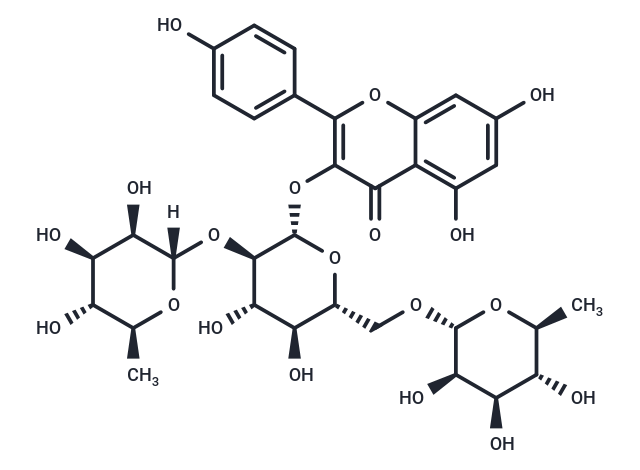Shopping Cart
Remove All Your shopping cart is currently empty
Your shopping cart is currently empty
Clitorin has free radical scavenging property. It shows significant interactions with CD38, it may have anti-hyperglycemic potential.

| Pack Size | Price | USA Warehouse | Global Warehouse | Quantity |
|---|---|---|---|---|
| 1 mg | $50 | In Stock | In Stock | |
| 5 mg | $147 | In Stock | In Stock | |
| 10 mg | $242 | In Stock | In Stock | |
| 25 mg | $397 | In Stock | In Stock | |
| 50 mg | $597 | In Stock | In Stock | |
| 100 mg | $849 | - | In Stock |
| Description | Clitorin has free radical scavenging property. It shows significant interactions with CD38, it may have anti-hyperglycemic potential. |
| In vitro | Antiplasmodial activity of extracts was confirmed and the active fractions in the extract were identified by HPLC-based activity profiling, a gradient HPLC fractionation of a single injection of the extract, followed by offline bioassay of the obtained microfractions. For preparative isolation of compounds, an alkaloidal fraction was obtained via adsorption on cationic ion exchange resin. Active compounds were purified by HPLC-MS and MPLC-ELSD. Structures were established by HR-ESI-MS and NMR spectroscopy. For compounds 5 and 7 absolute configuration was confirmed by comparison of experimental and calculated electronic circular dichroism (ECD) spectroscopy data, and by X-ray crystallography. Compounds were tested for bioactivity in vitro against four parasites (Trypanosoma brucei rhodesiense, Trypanosoma cruzi, Leishmania donovani, and Plasmodium falciparum), and in the Plasmodium berghei mouse model. Profiling indicated flavonoids and alkaloids in the active time windows. A total of nine compounds were isolated. Four were known flavonols--manghaslin, Clitorin, rutin, and nicotiflorin. Five compounds isolated from the alkaloidal fraction were piperidine alkaloids. Compounds 5 and 6 were inactive carpamic acid and methyl carpamate, while three alkaloids 7-9 showed high antiplasmodial activity and low cytotoxicity. When tested in the Plasmodium berghei mouse model, carpaine (7) did not increase the survival time of animals. |
| Molecular Weight | 740.66 |
| Formula | C33H40O19 |
| Cas No. | 55804-74-5 |
| Smiles | [H][C@@]1(O[C@H]2[C@H](Oc3c(oc4cc(O)cc(O)c4c3=O)-c3ccc(O)cc3)O[C@H](CO[C@@H]3O[C@@H](C)[C@H](O)[C@@H](O)[C@H]3O)[C@@H](O)[C@@H]2O)O[C@@H](C)[C@H](O)[C@@H](O)[C@H]1O |
| Relative Density. | 1.74 g/cm3 (Predicted) |
| Storage | Powder: -20°C for 3 years | In solvent: -80°C for 1 year | Shipping with blue ice/Shipping at ambient temperature. | ||||||||||||||||||||||||||||||
| Solubility Information | DMSO: 60 mg/mL (81.01 mM), Sonication is recommended. | ||||||||||||||||||||||||||||||
| In Vivo Formulation | 10% DMSO+40% PEG300+5% Tween 80+45% Saline: 2 mg/mL (2.7 mM), Sonication is recommended. Please add the solvents sequentially, clarifying the solution as much as possible before adding the next one. Dissolve by heating and/or sonication if necessary. Working solution is recommended to be prepared and used immediately. The formulation provided above is for reference purposes only. In vivo formulations may vary and should be modified based on specific experimental conditions. | ||||||||||||||||||||||||||||||
Solution Preparation Table | |||||||||||||||||||||||||||||||
DMSO
| |||||||||||||||||||||||||||||||
| Size | Quantity | Unit Price | Amount | Operation |
|---|

Copyright © 2015-2025 TargetMol Chemicals Inc. All Rights Reserved.